In Defense of Hannibal and Its Use of Gore
In the April 4, 2014 issue of Entertainment Weekly, journalist Mark Harris writes an editorial titled “Less Is More When It Comes to Gore.” In this piece, Harris argues that three current television series—The Walking Dead, The Following, and Hannibal—rely too heavily on gore as their source of horror. He states:
These shows are definitely gross, gory, and explicit. They are, in their ways, everything that horror should be. Except scary.
Harris makes some strong points, primarily that there is great value in leaving certain elements of horror to the imagination. In many psychological horror movies or tales of suspense, for example, it is definitely beneficial to withhold information from the audience. In Alfred Hitchcock’s famous horror films, such as Psycho and The Birds, the scenes of violence are surprisingly few, and the action is quick. Likewise, in a film like Stanley Kubrick’s The Shining, the bloodiest scenes are mere flashes in the characters’ minds. Harris also claims quite correctly that television shows in particular have a hard time being scary due to the feeling of safety we get from watching at home and the familiarity we feel from returning to the same show week after week. Classic horror shows such as The Twilight Zone and The X-Files overcame this problem by taking the audience someplace new each week.The latter dabbled in displays of gore, but it certainly did not rely on it. These approaches to horror are tried and true, but are they necessarily appropriate for the three shows that are the targets of Harris’s criticism? I do not watch The Following or The Walking Dead; thus, I cannot address Harris’s claims about those shows (readers can feel free to discuss them in the comments). However, I watch Hannibal, and I think that as far as this show is concerned, Harris is wrong.
In Hannibal, based on characters created by Thomas Harris and adapted for television by executive producer Bryan Fuller, we indeed see many murders grotesquely presented to us, from corpses mounted on deer antlers to bodies used as mushroom fertilizer, from corpses flayed to look like angels to a human skull re-purposed as a beehive. And yes, these scenes are gory and explicit, and when we see Special Agent Will Graham (Hugh Dancy) act out the murders in his mind in an attempt to empathize with the killers, the blood flows plentifully. Does this detract from the show being scary, or does it serve another purpose? I would like to counter Harris by demonstrating how Hannibal‘s focus on the aesthetic dimensions of murder necessitates an emphasis on the visual (and visceral) properties of the victims. This is especially true in regard to Hannibal Lecter’s (Mads Mikkelsen) victims, parts of whom inevitably end up as ingredients in his exquisitely crafted meals. Also, I believe that we can better understand Will Graham’s struggles with his empathy disorder by seeing how extreme the murders are that he must reenact in his mind. The idea of “less is more” would weaken our sympathy with Will in this regard, just as it would weaken our aesthetic and emotional responses to the murders.
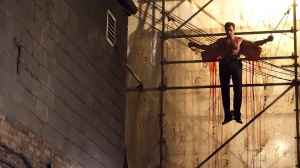
In “Seitz on Hannibal: It’s All a Dream, and It Hurts,” published on Vulture, critic Matt Zoller Seitz admits that Hannibal is “the goriest show on TV.” However, he also points out that we rarely see the murders being committed but are only witnesses to the aftermath: the “art-directed-to-the-nines” crime scenes. These scenes are where we are faced with the idea of the murders being works of art. The show does not shy away from this, and the characters—primarily the investigators—often talk about the crime scenes as if they are trying to decipher the meaning of a painting. Hannibal Lecter, a cultured aesthete, is often the one most appreciative of these diabolical works. He tries to add a similar level of artistry to his own murders and subsequent feasts. Seitz theorizes:
[…] the relationship between the killers and profilers on this show is a metaphor for the relationship between the artist and a viewer. The serial killers all seem to fall into one of two categories: originals and copycats. The profilers analyze their handiwork for “signatures” and pore over crime scenes with the obsessive thoroughness of art historians or critics trying to separate bad art from good and good from great. Think about how often one cop will torpedo another’s “identification” of a crime scene by saying, in effect, “I don’t think the work is sophisticated enough to be the work of that particular artist, as you claim” — as if they’re trying to figure out whether a painting is a bona fide masterpiece or a forgery by studying the brushstrokes. The killers paint in blood and entrails, or distort corpses into sculpture or mixed-media works.
If we accept the show on these terms, then we must embrace the “blood and entrails” as part of the complete painting, so to speak. We cannot judge a painting by ignoring certain aspects of it. Nor can investigators hope to solve a crime by discounting certain pieces of evidence. Just as they must face the totality of a crime scene, gore and all, so must we, the audience.
To demonstrate the actual aesthetic function of the gore in Hannibal, I want to highlight a murder from the episode “Mukōzuke” of the show’s second season. The victim in this case is sliced lengthwise, and each slice is displayed in glass. This draws immediate comparison to the art installations of contemporary artist Damien Hirst, who has worked with animal corpses in a similar fashion. One piece in particular, Mother and Child (Divided), features a cow and calf, each sliced lengthwise, with each half separately displayed.
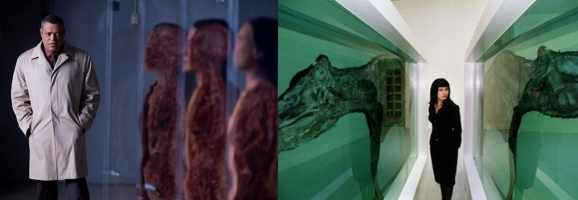
In Hannibal, the investigators study the crime scene in an attempt to discern what message the killer was trying to send by presenting the body in this striking manner. This is perhaps not too different from the way gallery goers would walk among Hirst’s works and discuss what they might mean, what the artist was trying to say in such explicit and gory terms.
The fact that the gore might elicit feelings of disgust does not in any way detract from the idea that Hannibal is asking us, like Damien Hirst, to look at the displays of death aesthetically. To be sure, I think that is the point. In her book Savoring Disgust: The Foul & the Fair in Aesthetics, the philosopher Carolyn Korsmeyer discusses at length the aesthetic dimensions of disgust. In one chapter, in listing artworks that utilize aesthetic disgust, she not only mentions Damien Hirst—she mentions Hannibal Lecter and The Silence of the Lambs as well. She writes:
[…] here are works that disgust because of the treatment their difficult subjects demand.
Yes, and I would suggest that Hannibal and Hirst both use gore to disgust their audiences in just this way: to grab our attention and force us to confront difficult subjects (i.e., death and mortality) head on.
To return to the subject of Hannibal Lecter’s cannibalism, this is another example where the gore serves a very specific purpose. We see Hannibal prepare the organ meats of his victims, quite graphically, and then present them to guests with artful and beautiful plating. Again, in this instance, the show asks us to view the murders aesthetically, and the primary emotional response it seems to seek is indeed disgust. The disgust is more pronounced because we see the preparation of the meals and then see them consumed by Hannibal’s oblivious dinner guests. This strong feeling helps us understand just how demeaning the act of cannibalism is, how it reduces people with distinct personalities to mere foodstuffs. Yet the disgust also helps us see to what extent art (e.g., Hannibal’s attractive plating) can sometimes conceal and blind us from these darker truths. Thus, I would say that the use of gore in Hannibal allows it to communicate powerful ideas to us by way of our aesthetic and emotional reactions to it (e.g., our feelings of disgust).
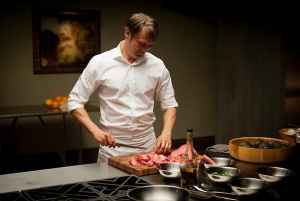
To highlight one final example, I want to look at the show’s depictions of Will Graham’s empathy disorder. Will is considered one of the best crime scene investigators because of this disorder. He can take the evidence of a crime scene and extrapolate backwards to reenact the scene in his mind from the killer’s point of view. The show presents this mental activity to us in full detail. Thus, we watch Will Graham, our protagonist, killing the very victims for whom he is seeking justice. These scenes might involve slicing, stabbing, strangling, and other discomforting acts of violence. Why put the audience through this? The arc of the show’s first season involves Will Graham suffering under the mental toll of his empathy disorder. Each case he helps solve seems to bring him closer and closer to a complete mental breakdown. Would his mental hardships be as believable to us if we didn’t experience firsthand just how emotionally distressing each investigation is to him? I think that by showing us the full extent of Will’s empathy with the murderers, we are able to feel the same feelings of disgust that he feels. Thus, we can better sympathize with him and his personal struggles.
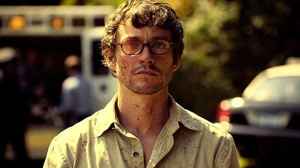
As I mention above, I think that the idea of “less is more” in terms of gore would not necessarily be beneficial to Hannibal and would weaken its methods of communicating its ideas to the audience by eliciting strong emotional responses, such as disgust. Does the gore make the show less scary, as Mark Harris claims? Perhaps, but I think that the show’s aims are quite different from those of typical horror. I think that it has more in common with works like Damien Hirst’s art installations (discussed above), Grand Guignol theatrical presentations, or Hieronymus Bosch’s paintings of hell. It does not simply want to scare its audience. It wants us to confront complex ideas about death and mortality and to consider our visceral and intellectual responses to these ideas. Ultimately, I think that the show wants us to scare ourselves. The gore is simply a tool to aid us in this endeavor (and quite an effective one at that).
What do you think? Leave a comment.
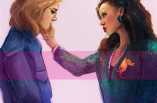
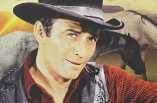
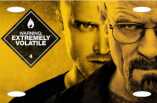

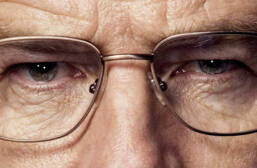


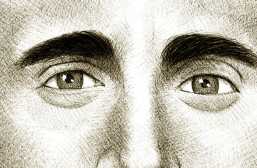

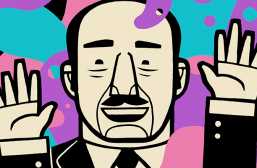
I fully agree with this article. I am a great fan – the atmosphere, sense of impending doom (perhaps imagined by us, the viewer, as we know the monster Hannibal is, more than the show itself), the performances, the style…
It is too bad that commercials break the flow of otherwise perfect storytelling. If you liked the first season then please do yourself a huge favour and rewatch the season without commercials. You will appreciate the artistry of this show much more when it flows the way that it is supposed to.
This is such a beautiful show. strange considering most of the beautiful shots are murdered people.
This is my third attempt to leave a comment. Hannibal is the one show of its type that I enjoy watching. I have devised a filter that allows me to tune in and not be squimish. I admire good art. And this is good art.
Not having seen “Hannibal” yet, I can only comment vicariously on the themes of this article: the aesthetics of “body horror” versus “mental horror” and the art we demand or expect from both. It would seem that we have always sought both types of horror– the physically disgusting and the imaginatively frightening– through our millennia-old-but-beloved monsters/freaks and bump-in-the-night stories/films. We crave stomach-churning physical glimpses of death and deformity just as much as we crave the hair-raising suspense of waiting to scream. In other words, we know we will die, just not when: disgust vs. delay, the patience of putrescence. The memento mori, the crucifix, the Sedlec Ossuary.
In correlation with your discussion of “Hannibal” and Hirst, it seems worth mentioning Tarsem Singh’s “The Cell,” which also featured recreations of Hirst’s sliced/glassed corpses in an elaborate (and arguably quintessentially successful) blend of physical disgust and psychological suspense/terror. That film, surely, placed its art first and foremost; where a show like “Hannibal” differs is perhaps only in the expectations we bring to it– expecting the formulaic action-shock of the film franchise, not the aesthetic emphasis on a whole new perspective on the timeless theme?
Also, I would argue that a fundamental difference in gore between “Hannibal” and “The Walking Dead” lies in the difference between violence done to the living (TWD) and violence done to the dead (H). TWD’s zombies may be nothing more than animated corpses, sure, but the gore they cause and receive is a result of active human-to-human violence, not (what I assume is) the passive art-focused gore inflicted upon already inanimate bodies, or the dehumanized parts of those bodies, in “Hannibal.” One show encourages us to destroy to survive; the other [I assume] encourages us to destroy to create.
Yes, except for the fact that many of violent and gory acts in Hannibal are in fact done to the living. One recent episode features a victim waking up to find himself part of a mural of human bodies. Very disturbing.
He was only living because he did not overdose as intended. There are definitely many violent and gory acts done to the living, though. Off the top of my head: the nurse having her eyes gouged out by Gideon, Dr. Chilton having organs surgically removed by Gideon, Gideon being eaten piece by piece by Hannibal, Hannibal being hung and bled out by the hospital orderly, Margo Verger having her reproductive organs surgically removed, Mason Verger eating his own face, that one character being burned alive, the people getting lobotomized by the bee lady…
Thank you, Kent, for your careful detailing of the similarities and differences between the two types of horror. And your referencing of The Cell is definitely relevant. I was actually working on an overview of the art of murder in film from Hitchcock to Hannibal, in which I would have talked about The Cell, but that piece morphed into this one after I read the EW editorial.
I think you are right that our expectations can distort our perceptions of a new work, especially one that we think we already know because we are familiar with earlier iterations.
Having read the trilogy (plus Hannibal Rising), it’s impossible to treat Thomas Harris’ incredible characters with anything but the appropriate level of stark horrific behavior! From the getgo, Lecter is a winning character, and he wouldn’t be half as complex and fascinating if his sociopathy and cannibalism didn’t simultaneously force you to question why you liked him so much. Harris’ work is all about the freakish dualities of charisma and horror, — the outwardly “sane” world and its outskirts — so I appreciate the show’s unabashed attention to physically frightening things. Great article!
Thank you! I appreciate the dualities that you discuss, especially the idea that things like charisma, manners, and the illusion of sanity might blind us from seeing the true horrors that lie beneath (or on the outskirts).
Great post! Why on earth would anyone even tune in to Hannibal if they don’t like violent programs…
It is one of my absolute favourites TV shows, period. A few are better, but have still more than one season, so Hannibal still has time to up its game, and I am sure it will.
I got into it because I loved everything Bryan Fuller did before, and I was always furious at his shows getting cancelled: he’s clearly someone with good taste, style and great visual talent, and his premises tend to be original and interesting.
Some may argue the quality of the show itself (and I’d die inside a little), but the performances are undoubtedly great and it definitely is the most beautiful show out there right now. It is weird to call something gore and disturbing beautiful, but I think there isn’t another word to it. It is stunningly beautiful.
Aside from Hannibal, I have only seen a few episodes of Dead Like Me. I definitely want to check out more of Bryan Fuller’s work, however. Thank you for the comment!
Good read Art.
Love that you paralleled Hannibal with Damian Hirst. Great comparison.
The gore is used as a common denominator for viewers to agree on something then make their own assumptions/interpretations based on their own histories.
Thank you, and good point about people responding to the show based on their own histories. I do think that our past experiences greatly influence how we respond to art, even if we are not totally conscious of just how powerful the influence is.
After reading the Harris piece you’re responding to, I don’t get a sense that he’s a fan of the horror genre (his only references are Jaws and Silence of the Lambs, and while the latter may tie into his dissection of Hannibal for obvious reasons, a better exemplar of his ‘less is more’ argument would be, for instance, either of the Hitchcock films you reference above) and definitely not able to distinguish between different types of horror with any nuance.
It’s a surface-level response to a trio of buzzy shows that share gore as a common element, albeit each to different effect (or, in the case of The Following, to no effect), and it reads like the author is doing his own blood-soaked version of bragging about how he’s never bothered to watch How I Met Your Mother.
Yes, I agree. And having just read through a giant wave of snarky HIMYM comments on Twitter, I think your comparison is quite apt!
Being relatively unfamiliar with The Hannibal series in any other iteration and put off from experiencing in any medium by it’s alleged gore, I only started watching this series from it’s beloved tumblr status – and I’m happy I did. It’s brilliant, yes, there is gore, but it is justified and given a humanity I didn’t expect to find from this show at all.
Totally a fan of this show. Anthony Hopkins might be the face of Hannibal Lector from the ages but Mads Mikkelsen is certainly shaping up to be my favorite Lector.
Gore? I’m not quite bothered by the gore part. The part that frightens me the most so far is some episodes ago when we’re shown the scene of the therapist drilling into the patient’s eyes. Artistic, yet at the same time truly horrifying, and that’s why we love this show.
I am normally squeamish about gore – The Walking Dead makes me cover my eyes a lot – but Hannibal has never bothered me. I think it’s because, like you stated, that the murders are displayed in such an artistic way. There is something mesmerizing about them, and you just can’t look away. I think this makes the show very scary. It presents the idea that someone could be so sadistic as to turn murder into an art form.
Oh god, the Following is easily the hugest gorefest that has ever been on Fox. I leave it on as I wait for the news to come on, so I’m not really watching it, but every time I look up, there is someone getting stabbed, cut open, tortured, etcetera. It’s such a nonsensical bloodbath, and I guess I’ve “seen” every episode, so I can safely say the plot is a real mess. It’s not scary, has a lot of artificial tension, and at least two bloody, exaggerated murders an episode. Who knows, maybe they’re being ironic ; )
Wow, I haven’t actually heard many good things about The Following, although the premise initially interested me. Seems like a wasted opportunity, but I guess it’s developed a loyal fan base.
For me, it depends on how the gore is used. It can be used effectively when expressing a situation or a personal / global issue. In most movies it has been used properly.
Each episode is a work of art, everything from the precision of Hannibal’s kitchen to the theatricality of the murders to the slow almost rhythmic dialogue. It creeps along slowly and surely, giving a great contrast to Graham’s evermore ragged mental state. What a ride.
The presentation of the body in “Mukōzuke” was indeed very artistic – comparing the work to Hirst’s art is apt — but my first thought was of The Visible Human project. A male and a female cadavar were frozen and then sliced in 1mm intervals as an aid to anatomy studies. As forensic scientists, Jack’s crime scene team would be familiar with the project, which is itself a blending of art and science.
I am still wondering if Hannibal just happened to have 12 sheets of tempered, drilled, 2″ thick, 6′ sheets of glass in his Murder Basement lying around in preparation for the day he’d want to display a body like that, but: Hannibal. Maybe he did.
Haha, maybe he did!
The connection you make to The Visible Human project is very much on point. This also makes me think of the Body Worlds exhibits where cadavers are displayed (as you mention above) as both educational tools and art objects.
love this article. the gore in this show sometimes makes it difficult to watch but I agree that it attaches itself to the entire theme of the show. the element of death and mortality is certainly elevated when we see actual visual images of character deaths. sometimes they really are disgusting though like the flayed couple in season one god
When it comes to Hannibal I always thought the art-gore was used to reflect on what the character Hannibal brings to the show. The series itself seems to add elements from the movies, the key one I’m preferring to is that the movies all revolve around Hannibal, but focus attention more to the other characters with Hannibal himself falling into a more secondary role. To remind viewers that Hannibal is still the star of the show—it is named after him after all—I figured art was used to represent him. Hannibal has always been aficionado of the fine arts, exquisite foods (prepared with people) and wines, and classical or opera music. To represent that, the viewers are provided with scenes of Hannibal’s elaborate entrees, scores of music that bring scenes to life in subtle ways, and then of course, the grim murder scenes which leads to my second thought of the show.
To me, the murder scenes play a. While they represent a darker art loved by Hannibal, they also represent a dark art hated by Will Graham. I look back to Manhunter. Hannibal the TV series is supposed to be like a prequel to Manhunter and a scene always jumps to me when I watch the TV series. In Manhunter, Will goes back to Hannibal to seek advice for a case and Hannibal begins to taint his mind, reminding him that Will is just as twisted and sick as he is. It’s a major dilemma for Will in the movie as he struggles to determine if he’s sane or not. With the sick murder scenes that Will has to re-envision, we as the viewers can finally have a true understanding of what Hannibal was referring to in the movie. The grotesque scenes leave that ill feeling necessary for us to wonder if something is off within Will’s mind as we watch him struggle through his mental disorders and the tainted psychiatrists he works with.
Wow, thank you for the thoughtful comment. I find your characterization of the Will/Hannibal relationship quite compelling. And I’m glad you bring up Manhunter. I agree that the series probably relates more to that film than the others. (It’s also my favorite of the bunch.)
While I haven’t seen Hannibal, I am an avid fan of The Walking Dead and the Following. For some reason, though the gore is graphically depicted, I’ve never been disturbed by it. Gratuitous gore in some ways can be employed to get the desired unsettling reaction from the viewer. The murders in the Following, much like what I’ve heard of Hannibal have artistic symbolism and are treated as works of art despite the gory horrors of such atrocities.
Thanks for commenting on the two shows to which I have a blind spot! I was very curious how much they may have had in common with Hannibal and whether or not Mark Harris was right about them. It seems he probably wasn’t.
Thank you for this engaging article
I bloody loved the show, the gore is justified and I found the cookery scenes to be more beautiful and exquisite than any cooking show. Bring on the next episode!
Hannibal is a fantastic show for discussing the merits and disadvantages of excessive gore in television. As someone who watches both Hannibal and The Walking Dead I’ve noted distinct differences in their treatment of death and butchery. You explore the audience’s feelings of disgust, claiming that this response “helps us understand just how demeaning the act of cannibalism is, how it reduces people with distinct personalities into mere foodstuffs.” I would actually argue that your claim is more fitting for an analysis of The Walking Dead. Again and again the show emphasizes that the walkers (zombies) are just that: walking corpses. Their humanity is gone and the knowledge that these individuals have been reduced to mobile, decaying carcasses is not only revolting, but positively terrifying. If there’s one thing that we both despise and fear, it’s the removal of our individuality; what makes us, us.
Hannibal, however, (as you rightly point out) is all about the art. He doesn’t kill and make people into “mere foodstuffs,” rather, each dish is an astounding creation; a masterpiece with its own taste, texture, look, etc. In a strange, twisted way Hannibal gives these people new personalities when he makes them into dishes. We’ve even been shown – specifically in the first season – Hannibal carefully choosing which recipe should be used for which victim, suggesting that there is a connection (for him at least) between the individual and the dish they become. This, for me, is what makes Hannibal horrifying. He’s playing at God, not just by choosing who lives and who dies, but also by choosing what people become once he’s killed them.
All in all, a great article. Thank you for starting such a fascinating discussion!
Very interesting! I think you are right. Though I do not watch The Walking Dead, I can see what you are getting at. I think it has to do with values. In both shows, individuals lose their humanity/personalities. However, in Hannibal, the individuals are given new value, whether as art objects, sustenance, or both. In The Walking Dead, on the other hand, the individuals are given no new value when they turn; they lose everything but gain nothing.
Thank you for the insightful comment!
“This, for me, is what makes Hannibal horrifying. He’s playing at God, not just by choosing who lives and who dies, but also by choosing what people become once he’s killed them.”
This comment really resonated with me. Having been a fan of the books and the Anthony Hopkins movies for over four years (and now, of course, of the show), I have not yet seen or heard that put so succinctly. It excellently characterizes Hannibal and is one of the reasons that I find him both disturbing and fascinating. The artistic nature of him, reflected by the show, the way his mind works, the way that he tries to change and correct people; it makes you want more despite your fears.
I’ve always felt that the gore in Hannibal was somehow justified, but I couldn’t articulate it quite like this. I never fully realized that we rarely see the murder itself in real time. We see only a static aftermath. Maybe it doesn’t make the shoe “scary” in the same way some of the classics are “scary,” but I do find it chilling in a genuine way, and I think that’s why. It’s horror minus the jump scares and big reveals with cacophonous strings playing in the background, and honestly, if I’m going to watch horror at all, that’s the kind of horror I’m most likely to watch.
I agree with what you are saying. I think the graphic murders and crime scenes really add to the intensity of the show and make it more terrifying. It really makes a difference too because so many TV fans are used to a certain level of gore and violence so Hannibal, going the extra mile to make it graphic, really makes it stand out more. Which helps us understand, as you mentioned, how Will Graham is dealing with all of these things. If the murders were more like what you see in most crime dramas, then although they are still horrible, it wouldn’t be as easy to understand just how much they affect Will. I think that this also is true for other shows such as The Walking Dead because like with Hannibal, they make it stand out as something truly scary and not something that the viewers would just see as, in that specific case, a typical zombie show/movie.
I honestly couldn’t agree more with this article and the ideas contained within. Just yesterday I had this very same conversation with a co-worker who, in addition to swearing up and down that “True Detective” is a superior show, claimed that “Hannibal” amounted to little more than prime time “torture porn.”
I took a minute or ten to explain what really constituted “torture porn” in my mind and to also explain that the show “Hannibal” is one of extremes and the visuals need to match.
It isn’t “Law & Order: SVU” where the very idea of the crimes perpetrated are enough to tear at your heart strings or wrench your guts. This is a show where the ideas and actions of some of the characters are so extreme that they have to be seen to be believed.
That’s part of why I never really discuss the show. Even with my years of writing experience, flair for the dramatic, and memory of every gory detail in an episode I’d never do it justice.
“Hannibal” is a beautiful, gruesome, damning, enlightening, and soul-blasting journey into the psyches of human monsters. The Devil really is in the details there.
As unattractive as gore may be in today’s media, it is an essential tool needed to tell the story of a dark world. For me, especially in the show Hannibal, the gore and horror adds an extra element, almost as if it was another character in the program. It may be hard to watch at times for some, but if they are watching a show based on a cannibalistic chef, they must anticipate a little carnage. Great job with a very convincing article!
Part of the power the gore provides to the show is in just how much beauty it’s been built to contain. Out of context, things like the eye of humans are indeed horrifying, but within the show, I find that this is dulled by the layers of meaning behind it; there is metaphorical significant for the killer, for Hannibal, and for Will, especially the moment when he looks up and imagines Hannibal staring back. I agree with you; even though they are graphic, scenes like this add to the overall quality of the show. It fits well, especially for a show that is so filled with metaphors, layers of meaning, and with such an unusally effective style.
I’m not one for violence or gore in most cases because of how fake each of these feel in films and tv nowadays. HOWEVER, after watching one episode of Hannibal, I was totally and completely hooked. Why? Because of that gore element. It’s so realistic and grotesque, but that makes the show addicting to watch. You’re constantly tuning in to see if the next episode could possibly be more gorey than the last. Great article!
My hubby and I are major Hannibal fans. If it is not renewed to finish it’s proposed 7 season run I will give up network TV all-together. It is the ONLY show we both truly enjoy and actually look forward to each week. I agree with all the wonderful explanations above of why Hannibal is excellent. It is elegant, visually stunning, intelligent, and suspenseful. And most importantly it challenges the viewer to pay full attention and actually think…something very rare on TV these days.
Personally, I find shows such as Criminal Minds and Law & Order: SVU to be much more deeply disturbing and off-putting than any “gore” Hannibal has ever presented to the viewer. If I see “pedophile”, “rapist” or “child abuse” listed in a program’s preview details I automatically skip it. At least Hannibal is (mostly)only eating the rude. 😉
A lot of times shows will have gore just for the sake of having gore. This is not the case in Hannibal, as you have explained above, because the gore is vital to the message. We wouldn’t understand why Will’s condition affects him so much. Also the artistic component of the murders elevates them above murder scenes from other series. By doing so, the serial killers themselves seem fundamentally different. For example, Hannibal doesn’t kill just for the sake of killing. He almost has a God-like approach to the way he sees humans, as if he is different than them. The best instance of this is when he flips a coin to decide someone’s life.
Hannibal’s wardrobe is impeccably stylish and worth the watch alone!
This show is amazing. Every episode just gets better and better. one of the best shows on TV. Hope the quality is maintained.